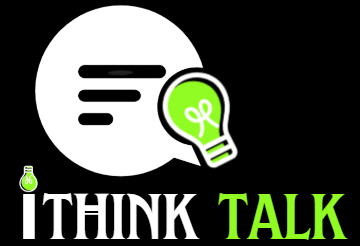Love is one of the most profound and complex emotions humans experience. It influences our actions, thoughts, and relationships in ways both subtle and overt. While some may verbalize their love freely, many express it through non-verbal cues, subconscious behaviors, and deep emotional attachments. But how can we truly tell when someone loves us? This article explores the psychology of love, the science behind attachment, and the hidden signals that reveal genuine affection. If you have ever thought, I think you love me, this guide will help you understand the deeper meaning behind those feelings.
Understanding Love: A Psychological Perspective
Love, in psychological terms, is often categorized into different types, such as romantic love, platonic love, and familial love. Researchers like Robert Sternberg propose the Triangular Theory of Love, which identifies three components: intimacy, passion, and commitment. When these elements interact, they form different kinds of relationships, from infatuations to lifelong partnerships.
Psychologists also examine love through the lens of attachment theory, originally developed by John Bowlby and later expanded by Mary Ainsworth. This theory suggests that the way we form attachments in childhood influences how we experience love and relationships in adulthood. Secure, anxious, or avoidant attachment styles shape how people express and perceive love.
Non-Verbal Cues of Love
Sometimes, words are not enough to convey deep emotions. Love often manifests through body language, facial expressions, and subtle behaviors that occur unconsciously. Here are some key non-verbal indicators of love:
1. Eye Contact and Pupil Dilation
Studies show that prolonged eye contact can indicate emotional connection and attraction. Additionally, when we look at someone we love, our pupils tend to dilate—a physiological response linked to heightened emotional arousal.
2. Mirroring Behavior
Unconsciously imitating another person’s gestures, speech patterns, or body movements is a strong sign of emotional connection. This phenomenon, known as mirroring, demonstrates an individual’s subconscious desire to establish rapport and intimacy.
3. Protective and Subtle Touch
Physical touch is a fundamental way of expressing love, whether through a gentle hand on the shoulder, holding hands, or brushing away a strand of hair. Even casual yet intentional touches indicate a deep sense of care and affection.
4. Proximity and Leaning In
A person in love tends to gravitate towards their object of affection, often sitting closer, leaning in during conversations, or positioning themselves in a way that maintains closeness.
Emotional Attachment and Love
Beyond physical gestures, love manifests through emotional attachment, which plays a critical role in relationship longevity. Psychologists define emotional attachment as a deep-seated bond formed over time through trust, support, and shared experiences.
1. Consistency and Reliability
One of the strongest indicators of love is emotional consistency. A person who truly loves you will show up when it matters, provide emotional support, and maintain reliability even in difficult times.
2. Prioritization and Sacrifices
Love often involves selflessness. When someone prioritizes your well-being, makes sacrifices for your happiness, or considers your needs equal to or greater than their own, it reveals deep emotional attachment.
3. Emotional Vulnerability
People in love allow themselves to be vulnerable, sharing their fears, hopes, and insecurities. If someone confides in you openly, it is a sign of deep trust and emotional connection.
Subconscious Signs of Love
Since love often operates on an unconscious level, people exhibit certain subconscious behaviors when they feel strongly for someone:
1. They Remember Small Details
A person in love pays close attention to your likes, dislikes, habits, and even trivial details. Remembering and referencing small things about you indicates genuine interest and deep emotional investment.
2. They Use ‘We’ More Than ‘I’
Language shifts are a strong psychological indicator of attachment. When someone frequently uses ‘we’ instead of ‘I,’ it shows they see you as a significant part of their life and future.
3. They Experience Jealousy and Protective Instincts
While unhealthy jealousy can be problematic, mild jealousy is a subconscious sign of attachment. People in love may show protective instincts, whether by ensuring your safety or expressing subtle discomfort when others get too close to you.
4. They Subtly Adjust Their Appearance
People naturally want to look their best for someone they love. This can include grooming habits, dressing well around them, or unconsciously fixing their posture or hair when near them.
Real-World Examples and Case Studies
To illustrate these psychological theories, consider the case of long-term partners who finish each other’s sentences—a result of deep familiarity and emotional attunement. Similarly, research on couples has shown that partners with secure attachments tend to have more stable, fulfilling relationships because they prioritize communication and emotional safety.
Additionally, love isn’t limited to romantic relationships—parents show subconscious love through protective instincts, and friends express it through acts of loyalty and unwavering support.
Conclusion
Love is more than just words; it is woven into our actions, behaviors, and subconscious cues. By understanding the psychological principles behind love, attachment, and non-verbal expressions, we can become more attuned to recognizing true affection in our relationships. Whether through body language, emotional availability, or subconscious signals, love reveals itself in ways that transcend mere verbal affirmations.
For more insights on human behavior and perception, check out Coincidence? I Think Not.





